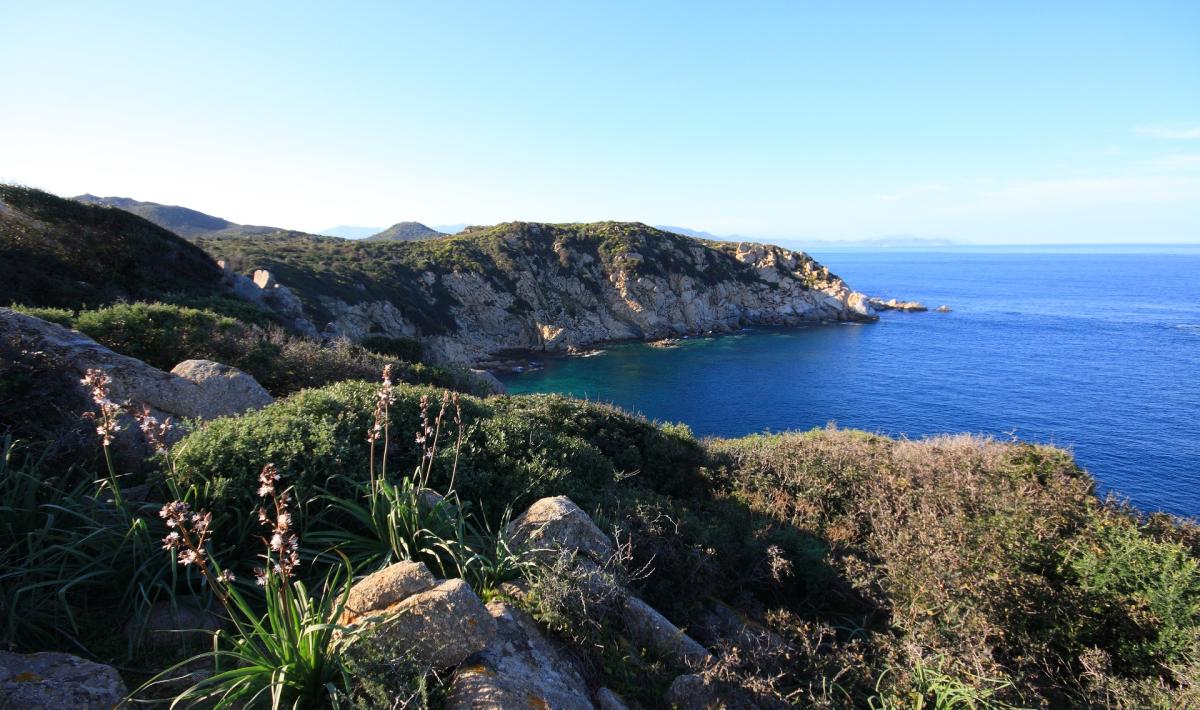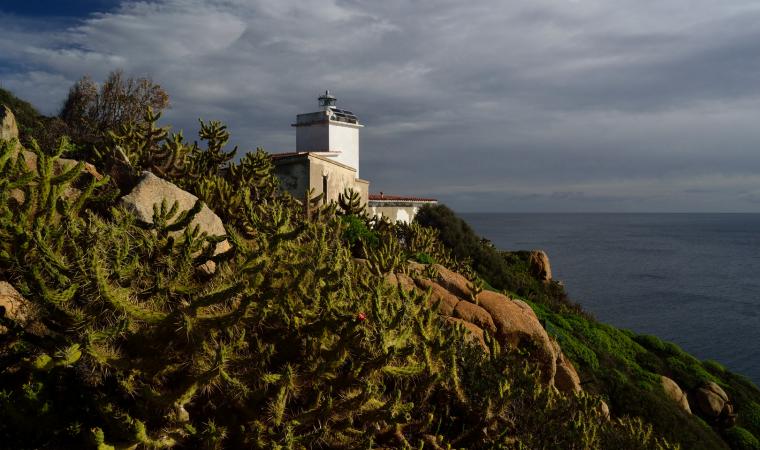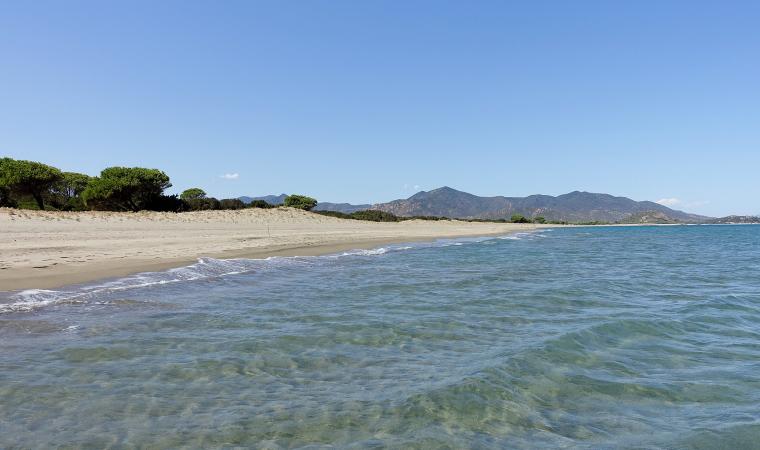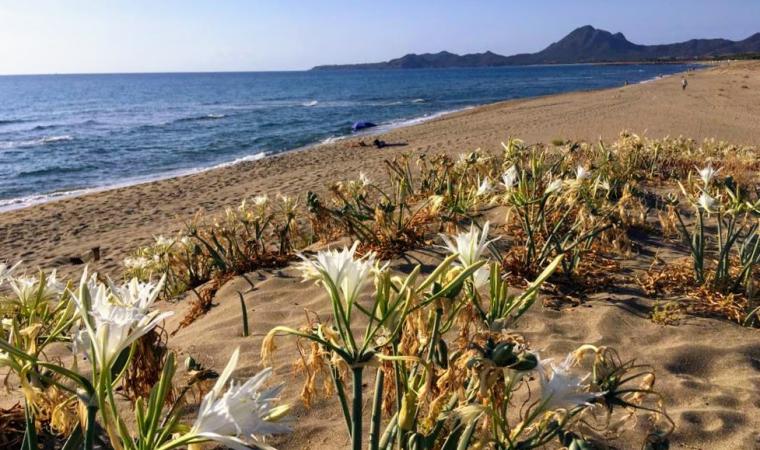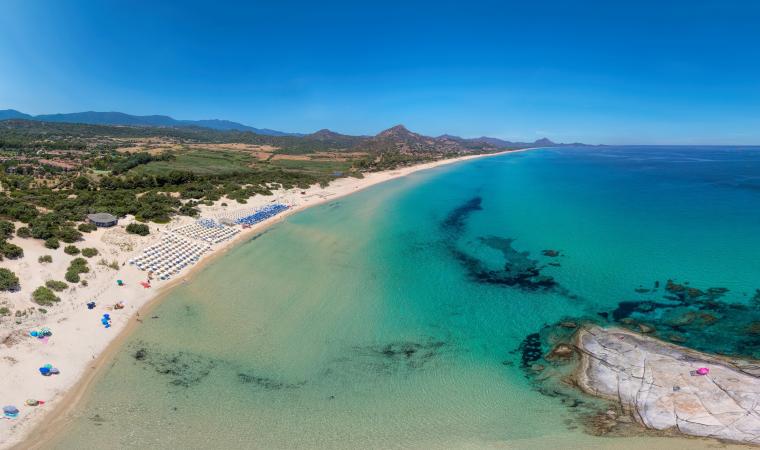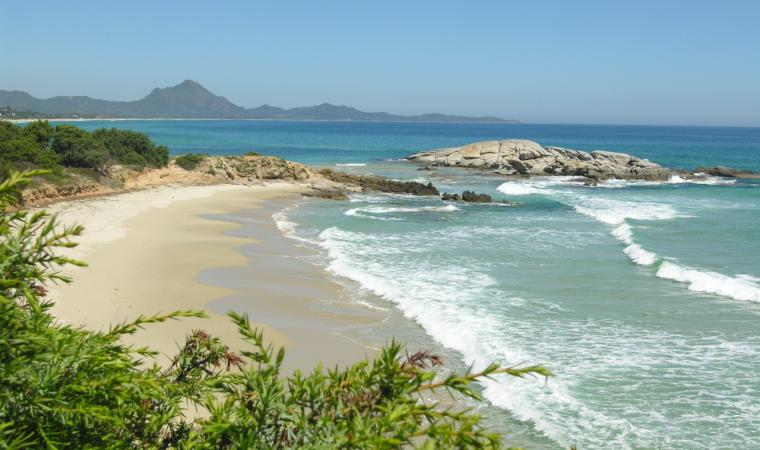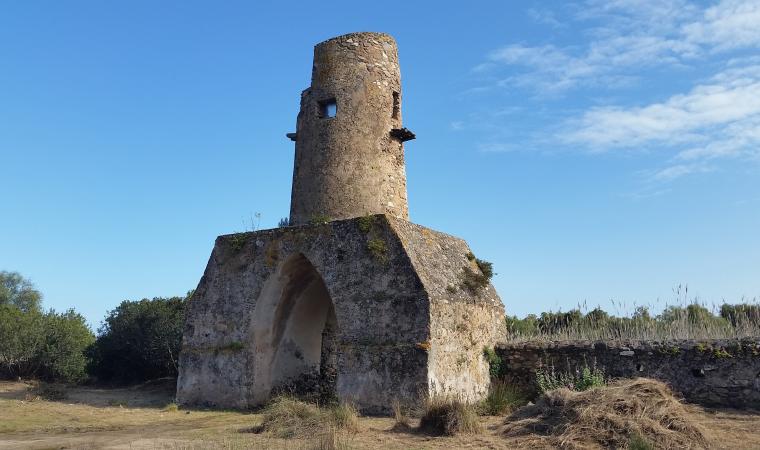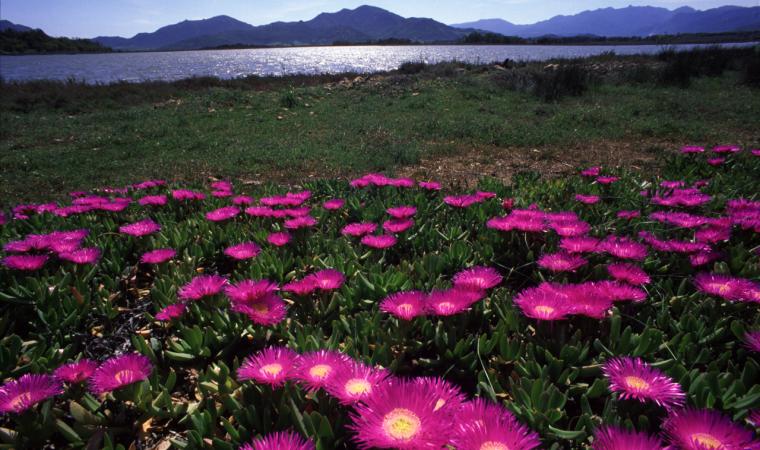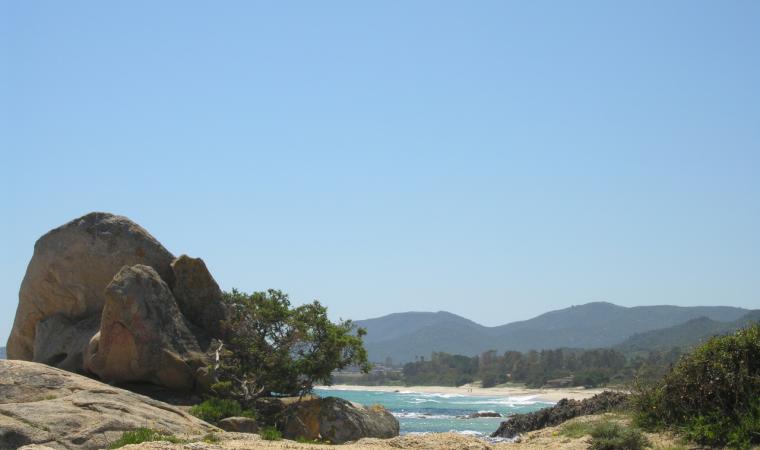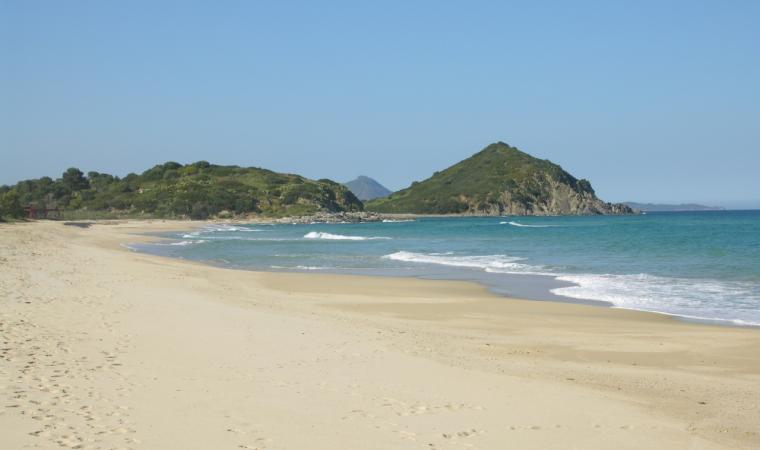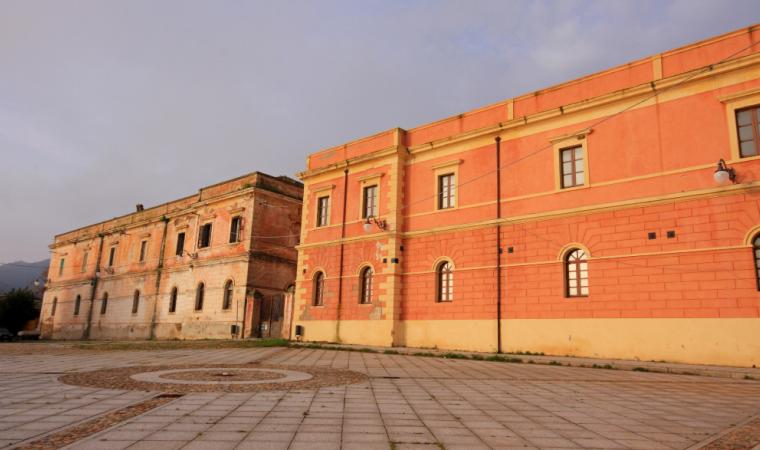Those who go there to enjoy the sea in a bay surrounded by wild nature cannot resist the desire to explore the paths through the Mediterranean greenery and admire the view from the nearby promontory. Those who venture out along the paths that cross Capo Ferrato, riding a mountain bike or wearing trekking shoes, after seeing the beach, can’t resist stretching out on the sand and diving into the crystal clear waters. Cala sa Figu is the perfect combination of sea and nature. The crescent-shaped bay is located in the coastal area of Muravera, bordered by rocky cliffs covered in vegetation. The beach is made up of small grey and white grains of sand and, in the northern part, there are also pebbles. The sea is a deep blue colour, its waters are shallow and the seabed is sandy in the central part, becoming rocky on the sides, near the cliffs.
There are no services and sa Figu is the ideal beach for those who love little-frequented and unspoilt stretches of coastline with a primordial appearance. It is also known as the ‘bay of the amphorae’: the reason for this is the presence, in the stretch of sea in front of the beach, of numerous fragments of terracotta from ships that sank in the Roman era.
A strip of granite rock separates the beach from another cove, which is smaller but equally fascinating: Portu de s’Illixi, also nestled between the cliffs. In the northern part, beyond a mass of rocks, it ‘conceals’ a secret: another tiny cove, almost invisible until you enter the water. Speaking of surprises, along the stretch of cliff immediately east of Cala sa Figu, while on board a boat, you can admire a natural phenomenon dating back millions of years and only visible from the sea: columnar basalts generated by the volcanic activity of the nearby Monte Ferru.
The granite spur of Capo Ferrato is a destination for outdoor activities: the waters around the promontory are frequented by snorkelling and underwater fishing enthusiasts. Meanwhile, on the surface, there are trekking and mountain bike trails running in a ring towards the Capo Ferrato lighthouse and passing by the Spanish tower of Monte Ferru, built in the 17th century to oppose the threat of pirates. Both from the top of the volcanic cone and from the top of the promontory, you can admire a captivating landscape, allowing you to see the pool and the coast of Feraxi, while to the south you will have an extensive view of the long, white stretch of sand of Costa Rei.

